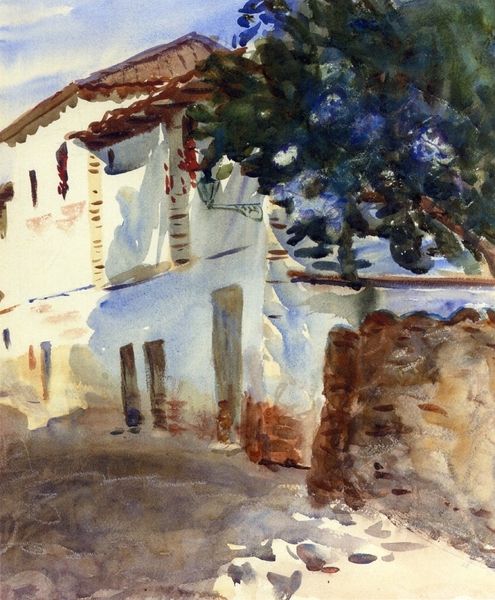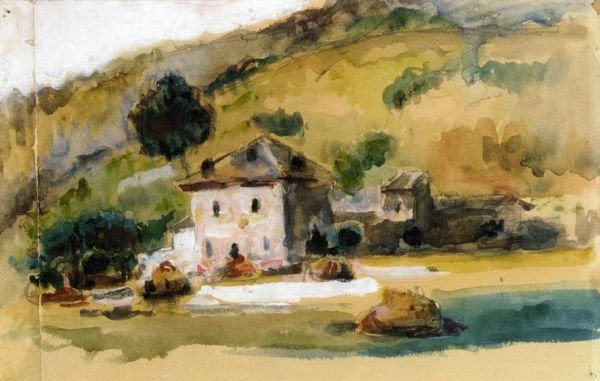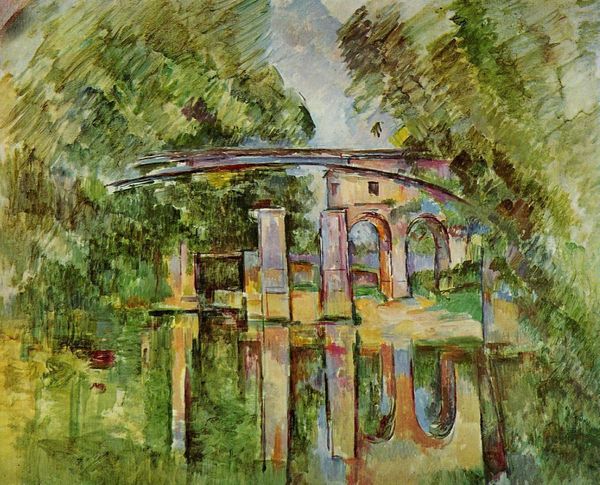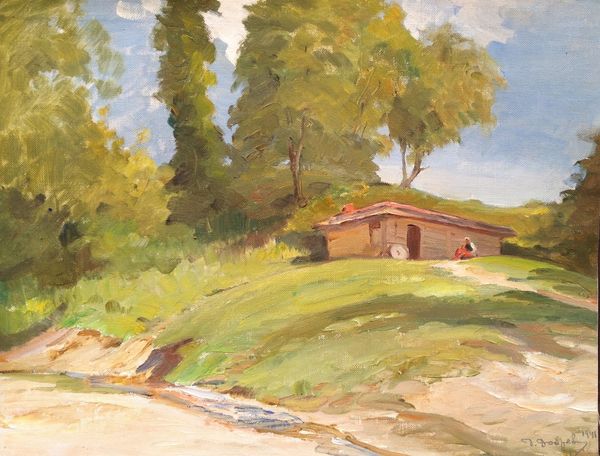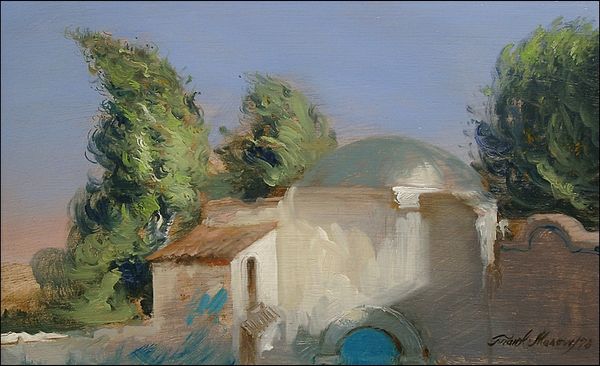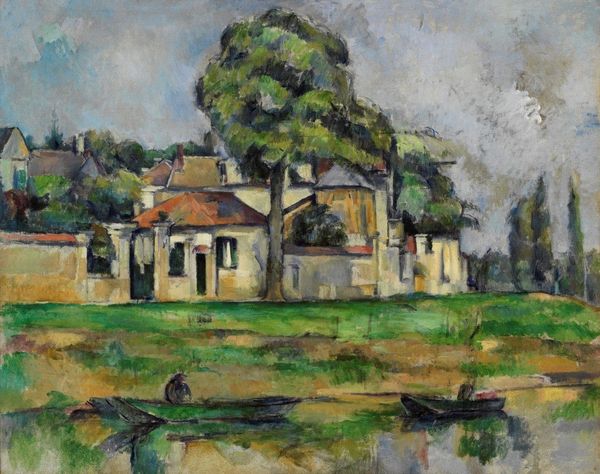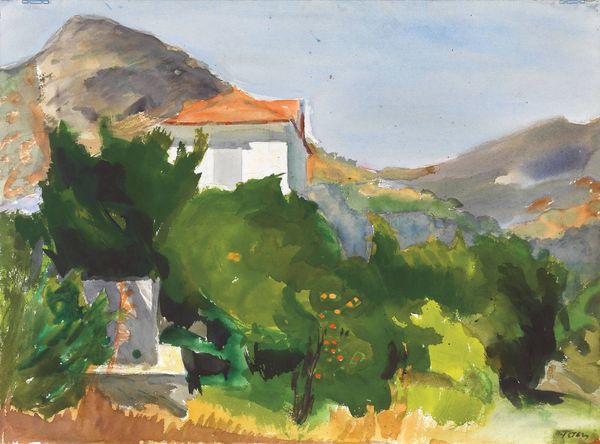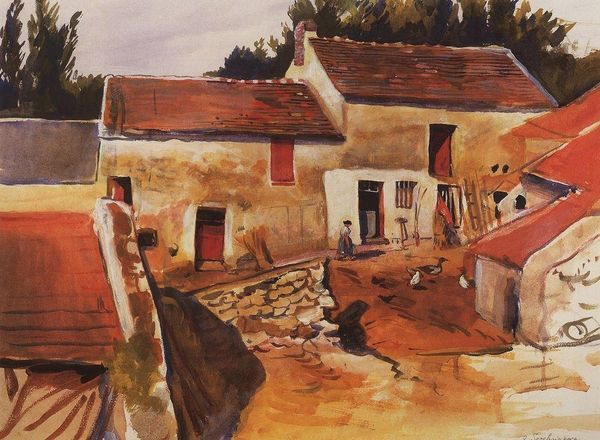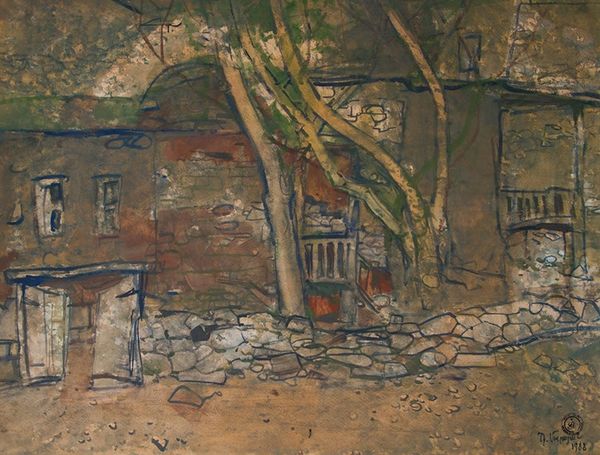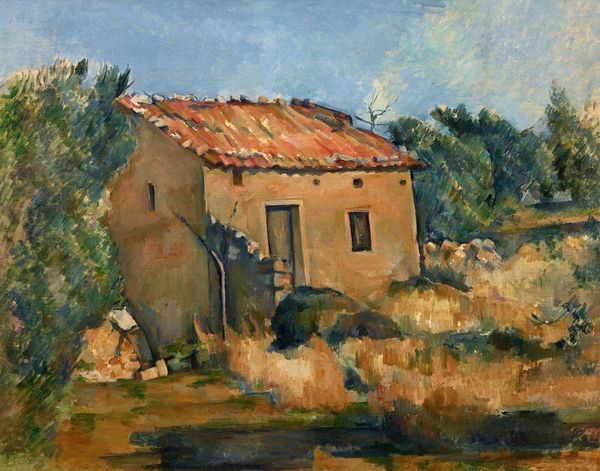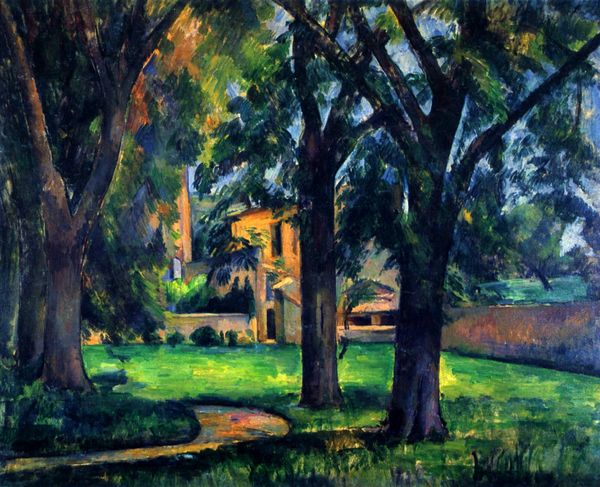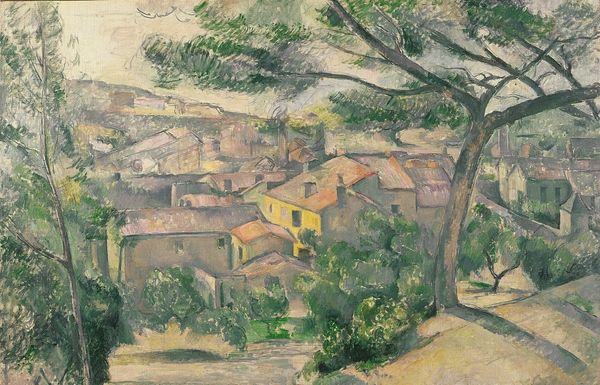
painting, plein-air, watercolor
#
rural-area
#
painting
#
impressionism
#
impressionist painting style
#
plein-air
#
landscape
#
impressionist landscape
#
oil painting
#
watercolor
#
cityscape
#
watercolor
Dimensions: 21 x 34 cm
Copyright: Public domain
Editor: So, this is Cézanne's "House in Provence," painted around 1867, and rendered with watercolors. I'm really drawn to the sketchiness and the loose brushstrokes; it feels unfinished somehow, yet complete. What’s your take on this work? Curator: It's important to understand the socio-political context surrounding Cézanne. Think about France in the late 1860s. It was a period of significant change, with evolving urban landscapes and burgeoning industrialization. How does Cézanne's choice of subject, this rural house, interact with the era's shifting values and focus? Editor: That's a really good question. It makes me think he was looking away from the changes happening at the time and towards something more grounded. Curator: Exactly. Cézanne positions this modest house not as a mere building, but as a symbol of enduring, timeless values rooted in nature. In what ways might the ‘unfinished’ quality you observed reinforce this reading against the rapidly changing times? Editor: Hmm… maybe the sketchiness makes it feel more authentic and less manufactured, which stands in contrast to the industrial aesthetic that was on the rise. Curator: Precisely! Moreover, consider the watercolor medium itself. What did it afford Cézanne in expressing these sentiments versus oil paints or grand-scale history painting that were the emblems of official Salon culture? Editor: Watercolor’s portability enabled the practice of plein-air painting that allowed an immediate visual experience without all of the fuss that’s usually involved when it comes to art production. And in doing so it moved the means of artistic production outside established institutions. It allowed art to breathe! Curator: Excellent insight! We tend to view Impressionism aesthetically, but the socio-political element of its open-air and on-site method also disrupted studio culture, contributing towards its transformative nature! Editor: I had never thought about Impressionism in this light! Thanks!
Comments
No comments
Be the first to comment and join the conversation on the ultimate creative platform.
